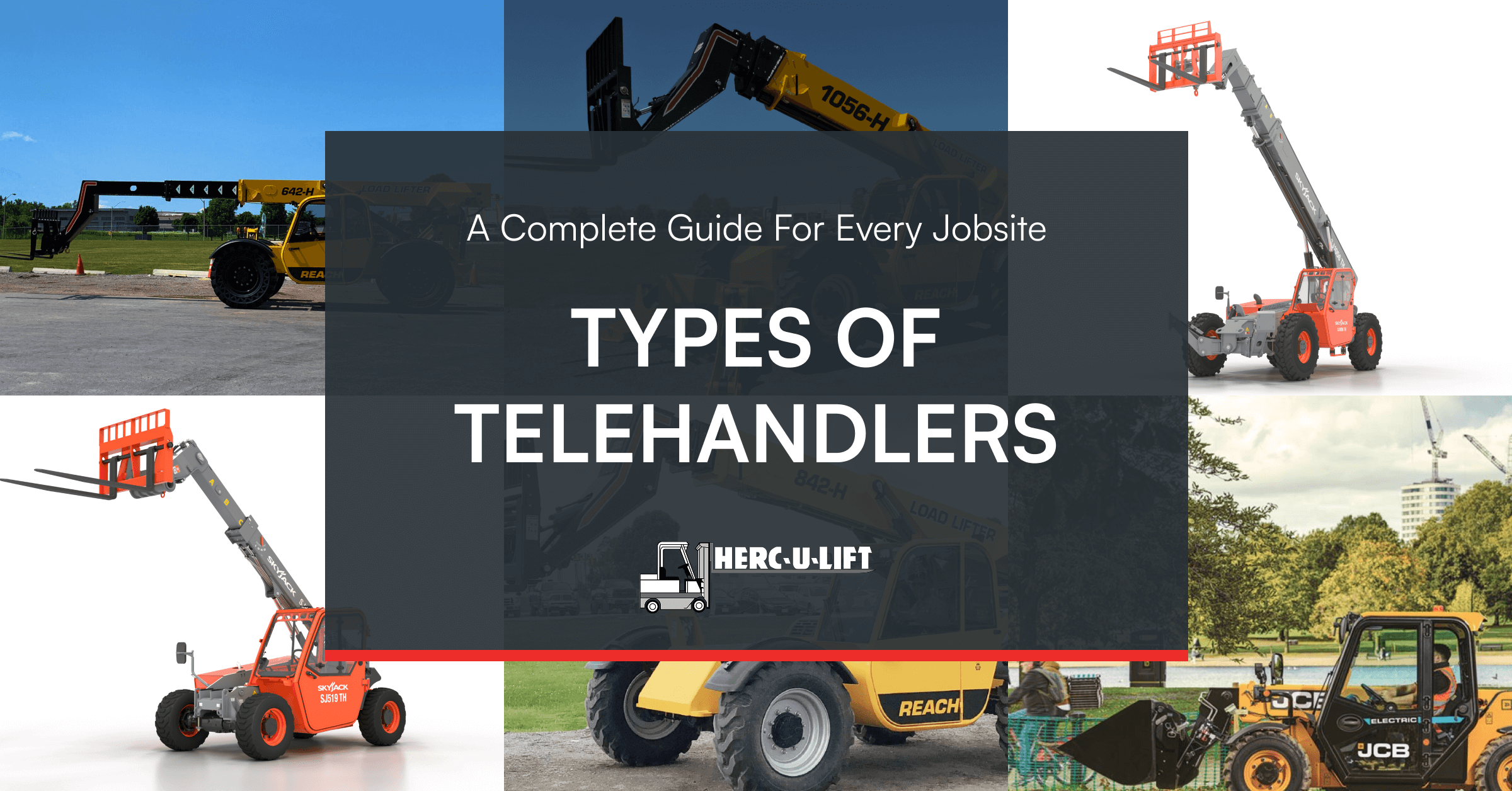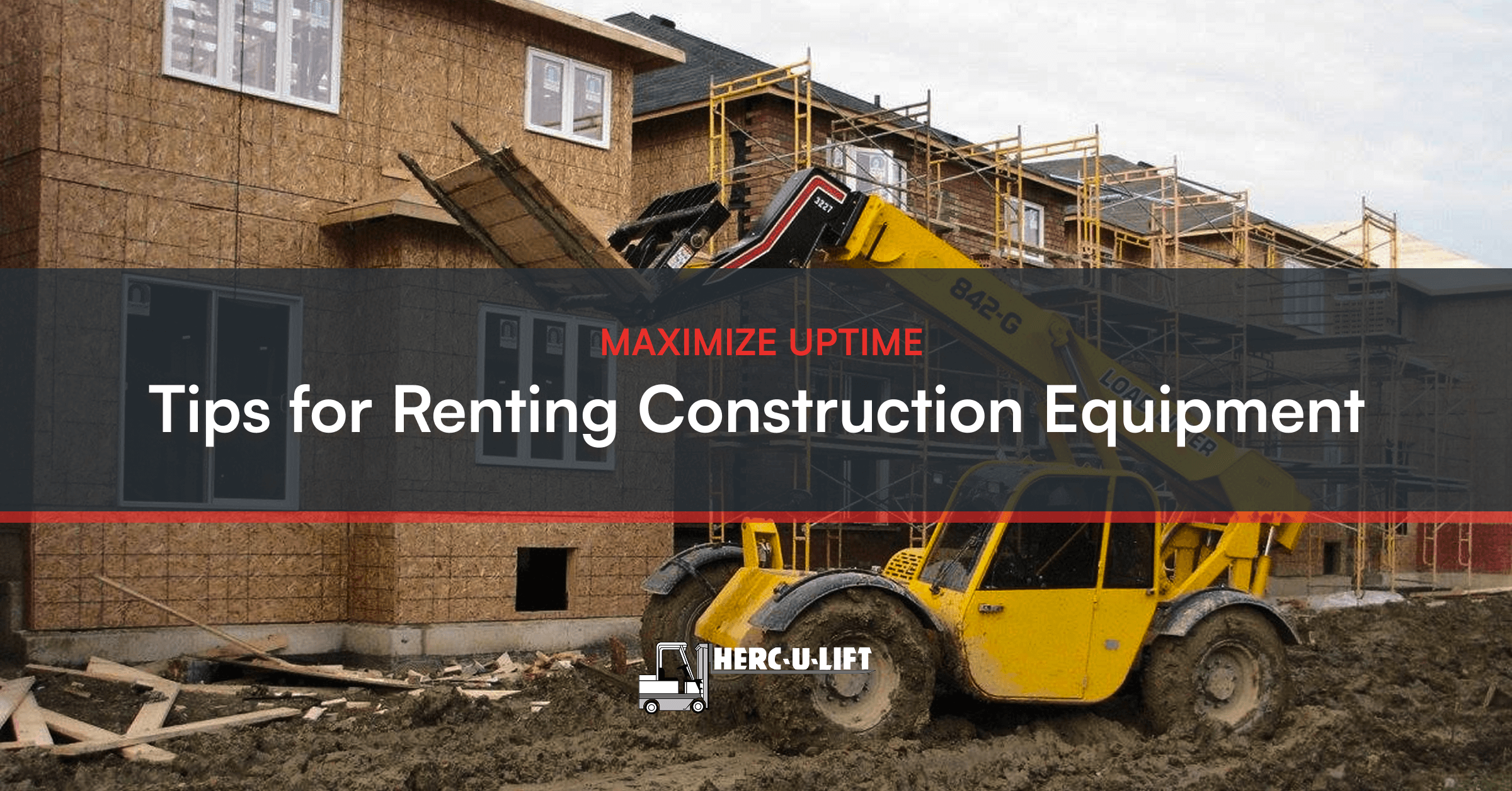Types of Telehandlers: Which One Fits Your Needs?

What happens when you merge a forklift’s lifting power with a crane’s reach? Well, you’ll get a telehandler!
Also known as telescopic handlers or boom lifts, telehandlers are among the most versatile material handling machines. They lift, extend, and rotate. In fact, they generally save the day when gravity and logistics make the job harder!
Different jobs and terrain conditions require different telehandlers. Choosing the right equipment ensures jobsite productivity. Moreover, it affects operator safety, machine longevity, and overall project costs.
In this guide, we’ll break down the most common types of telehandlers available in today’s market. We also share insights about their strengths, limits, and real-world applications. So when it’s time to rent or deploy one, you won’t have to guess. You’ll be making an informed decision.
What Makes Telehandlers Unique
Telehandlers are known for their hybrid functionality. Much like a crane, it has a telescopic boom that can extend both forward and upward. A telehandler can reach places a traditional forklift can only dream of.
A telehandler easily navigates rough terrain with its 4WD and high ground clearance. It also uses interchangeable attachments like pallet forks, buckets, lifting hooks, and winches. Depending on the model, the lifting capacity ranges from 4,000 to over 20,000 lbs.
These machines show up everywhere. They do material handling on construction sites or lift hay bales in farms. Likewise, they help set up stages and lights for special events. The smaller telehandlers even handle indoor warehouse stocking tasks.


Advantages
A standard telehandler is relatively low cost and easy to maintain. It is also readily available anywhere you can rent heavy equipment.Limitations
Its fixed boom limits the machine’s reach. If your job needs tight turns or vertical reach, this isn’t the equipment for it. Also, don’t expect any tight cornering or fancy tricks.Advantages
High-reach telehandlers can lift loads to significant heights. This makes them ideal for multi-story framing, roofing, and scaffold work. Most models also handle rough terrain, so they work well outdoors.Limitations
Their long booms reduce stability at full extension. Also, boom sway is real. So keep it slow, steady, and supervised.Advantages
This can do multi-position lifting without repositioning the entire machine. It’s precise and efficient in material placement. It reduces the need for a crane or other additional equipment.Limitations
A roto telehandler is typically more expensive to rent and maintain. It’s also bigger, heavier, and less agile than other types. Operation demands a steep learning curve. So rookings beware!Advantages
A compact telehandler is built for tight areas. It easily fits through standard doorways and service entrances.Limitations
It has lower lifting capabilities so it’s not suitable for large or heavy loads. Vertical and forward reach are also limited.Advantages
Heavy-duty telehandlers offer excellent stability under heavy loads. They replace cranes for repetitive lifting tasks.Limitations
They aren’t the most agile machines. On top of that, they come with higher rental and maintenance costs.Advantages
Electric telehandlers guarantee lower emission and noise. They are safe to use in areas with limited ventilation. Plus, they cost less to operate.Limitations
They have lower lifting capacities. Most models require frequent recharging for longer shifts. Additionally, they’re not easy to find on the rental market.Choosing the Right Telehandler: Key Considerations


 →
→

